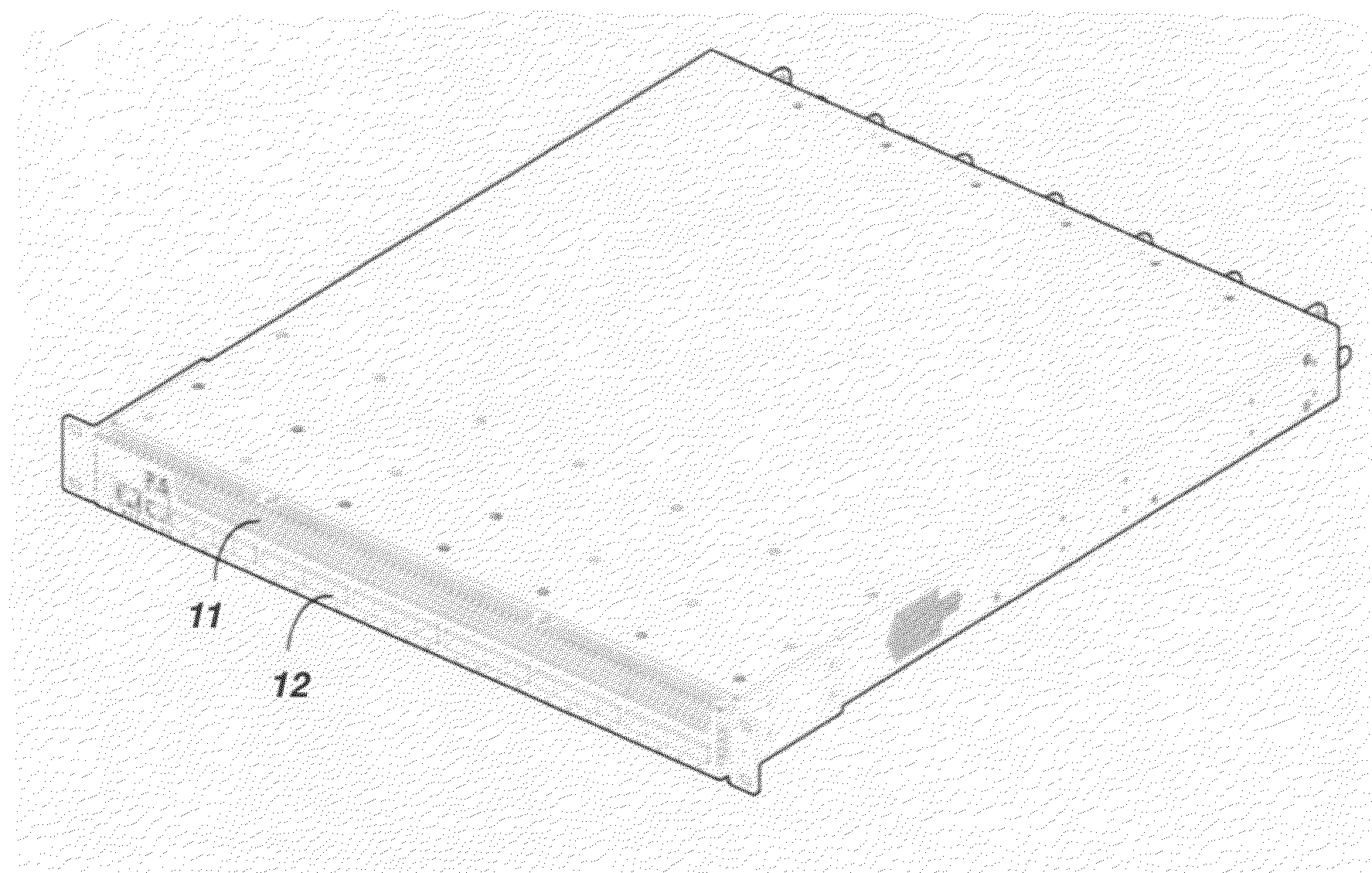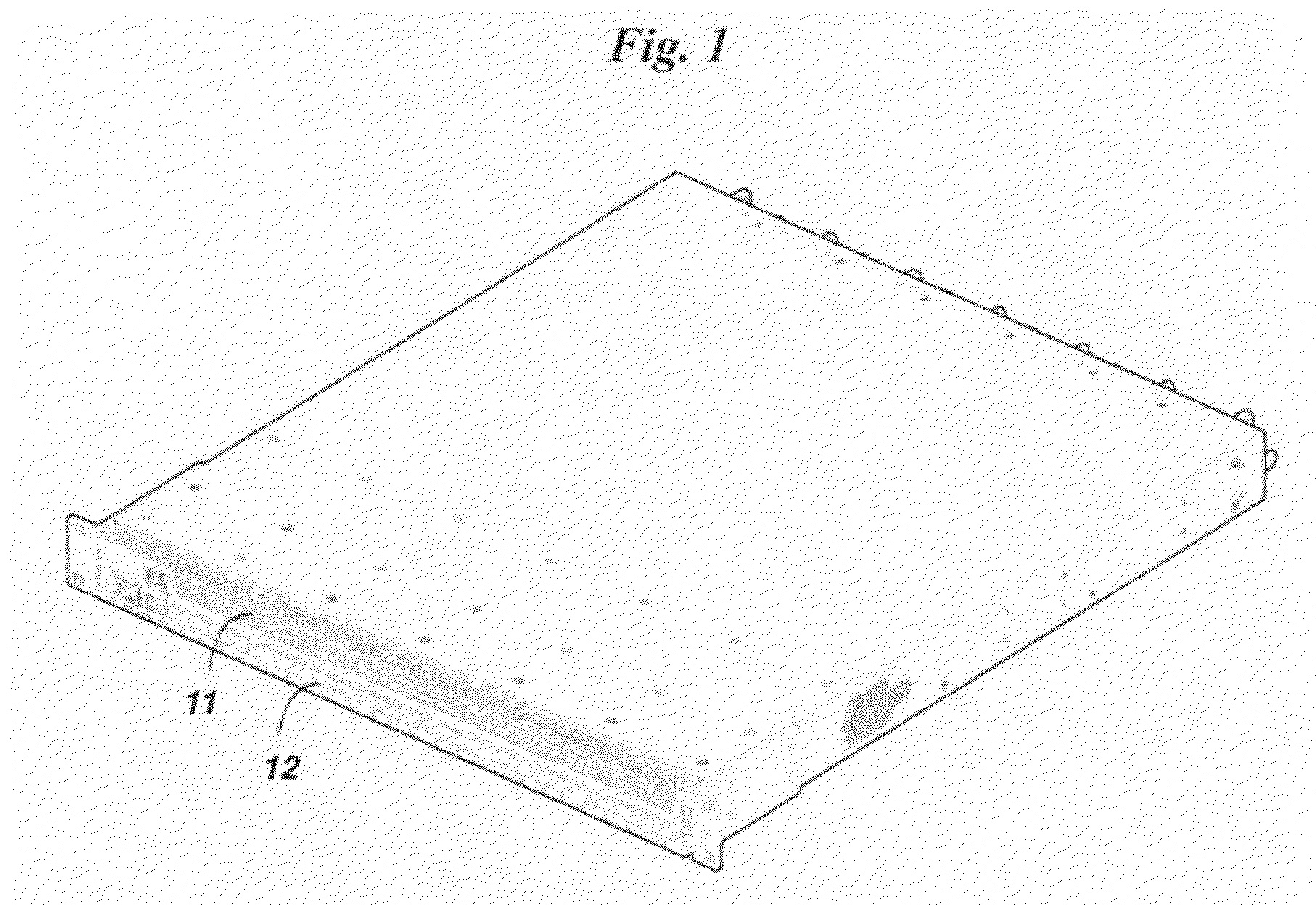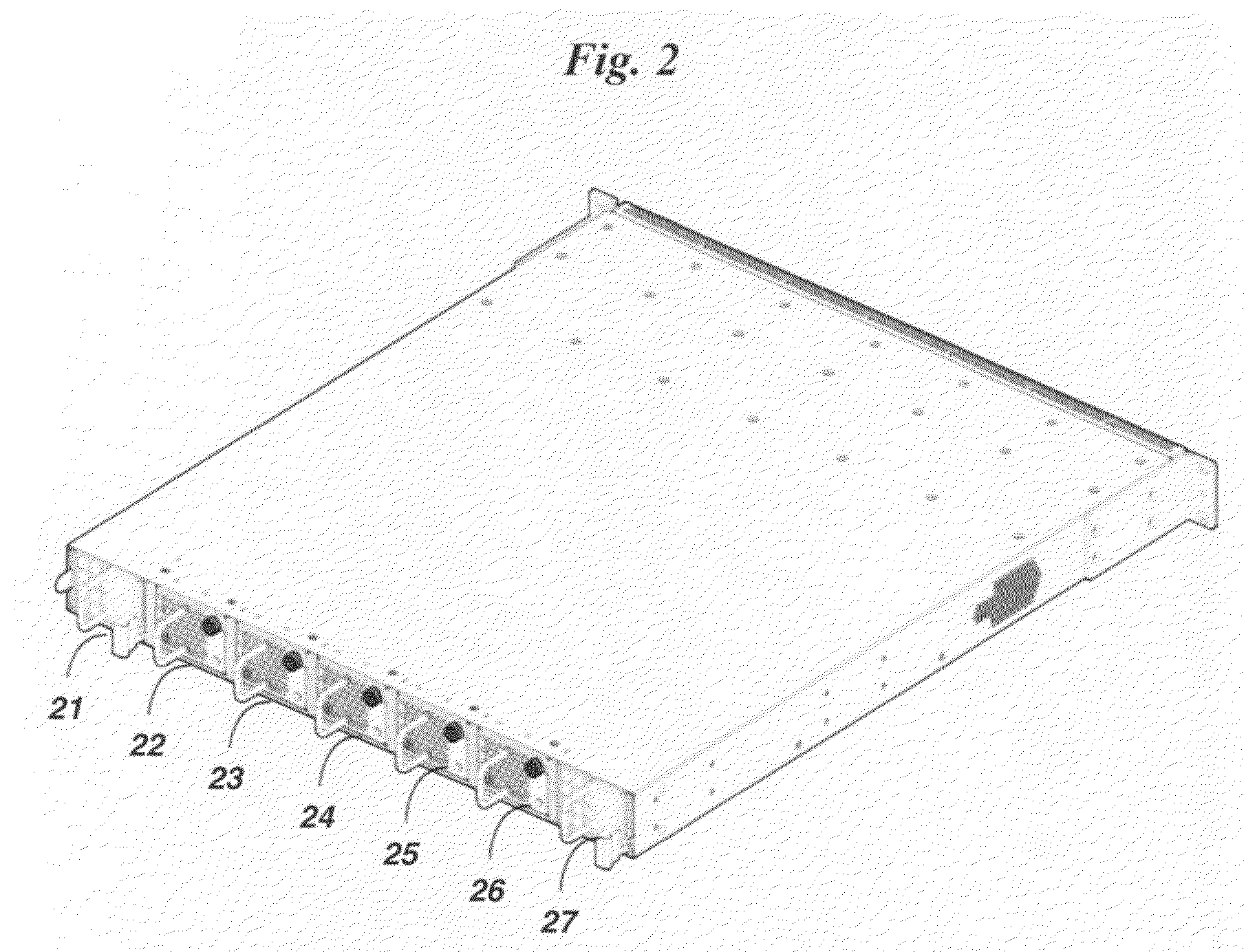Network switch cooling system
a network switch and cooling system technology, applied in the direction of cooling/ventilation/heating modifications, electrical apparatus casings/cabinets/drawers, instruments, etc., can solve the problems of less effective heat transfer, electrical components contained within the chassis generate a significant amount of heat, and may cause thermal damage to electronic components
- Summary
- Abstract
- Description
- Claims
- Application Information
AI Technical Summary
Benefits of technology
Problems solved by technology
Method used
Image
Examples
Embodiment Construction
[0017]This invention relates to the design of high-performance network switches to provide appropriate cooling. Aspects of the invention assist with combining the networking switch with server and storage units in an industry standard rack and to allow for cooling redundancy and the hot-swapping of fans without interrupting the operation of the networking switch.
[0018]FIGS. 1 and 2 are perspective drawings of an example switch chassis according to an embodiment of the invention. FIG. 1 shows the front end of the chassis, FIG. 2 shows the rear end of the chassis. The switch chassis shown in FIGS. 1 and 2 is a IU rack mounted chassis that provides a 24-port 10 Gigabit Ethernet switch.
[0019]The example switch chassis is designed to fit into an industry-standard 19″ rack with dimensions that are approximately 1.75″ high, 17.5″ wide, and 20″ deep. The front of the chassis has air openings 11 located above the networking ports 12. Air openings 11 allow air to enter or exit the chassis. Th...
PUM
 Login to View More
Login to View More Abstract
Description
Claims
Application Information
 Login to View More
Login to View More - R&D
- Intellectual Property
- Life Sciences
- Materials
- Tech Scout
- Unparalleled Data Quality
- Higher Quality Content
- 60% Fewer Hallucinations
Browse by: Latest US Patents, China's latest patents, Technical Efficacy Thesaurus, Application Domain, Technology Topic, Popular Technical Reports.
© 2025 PatSnap. All rights reserved.Legal|Privacy policy|Modern Slavery Act Transparency Statement|Sitemap|About US| Contact US: help@patsnap.com



